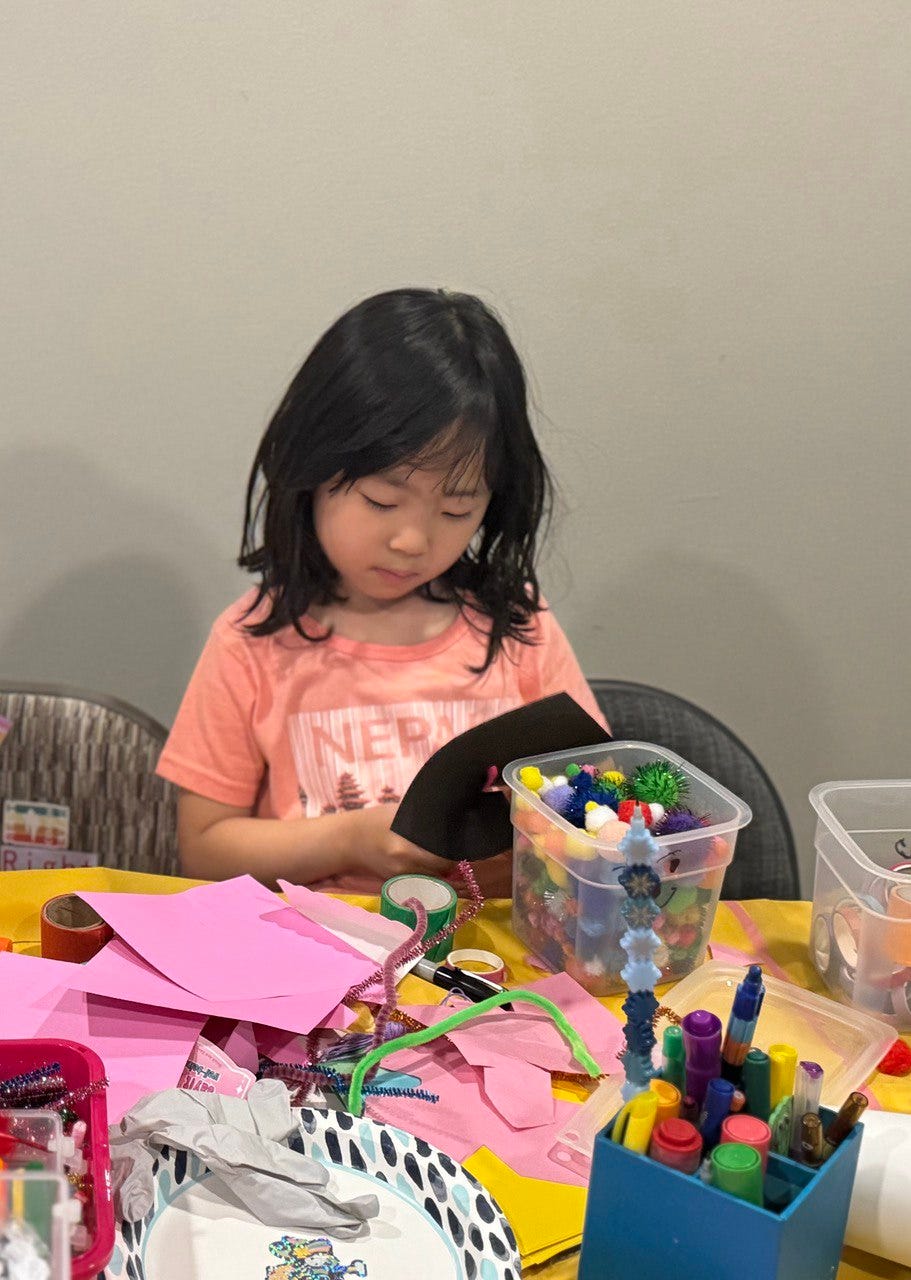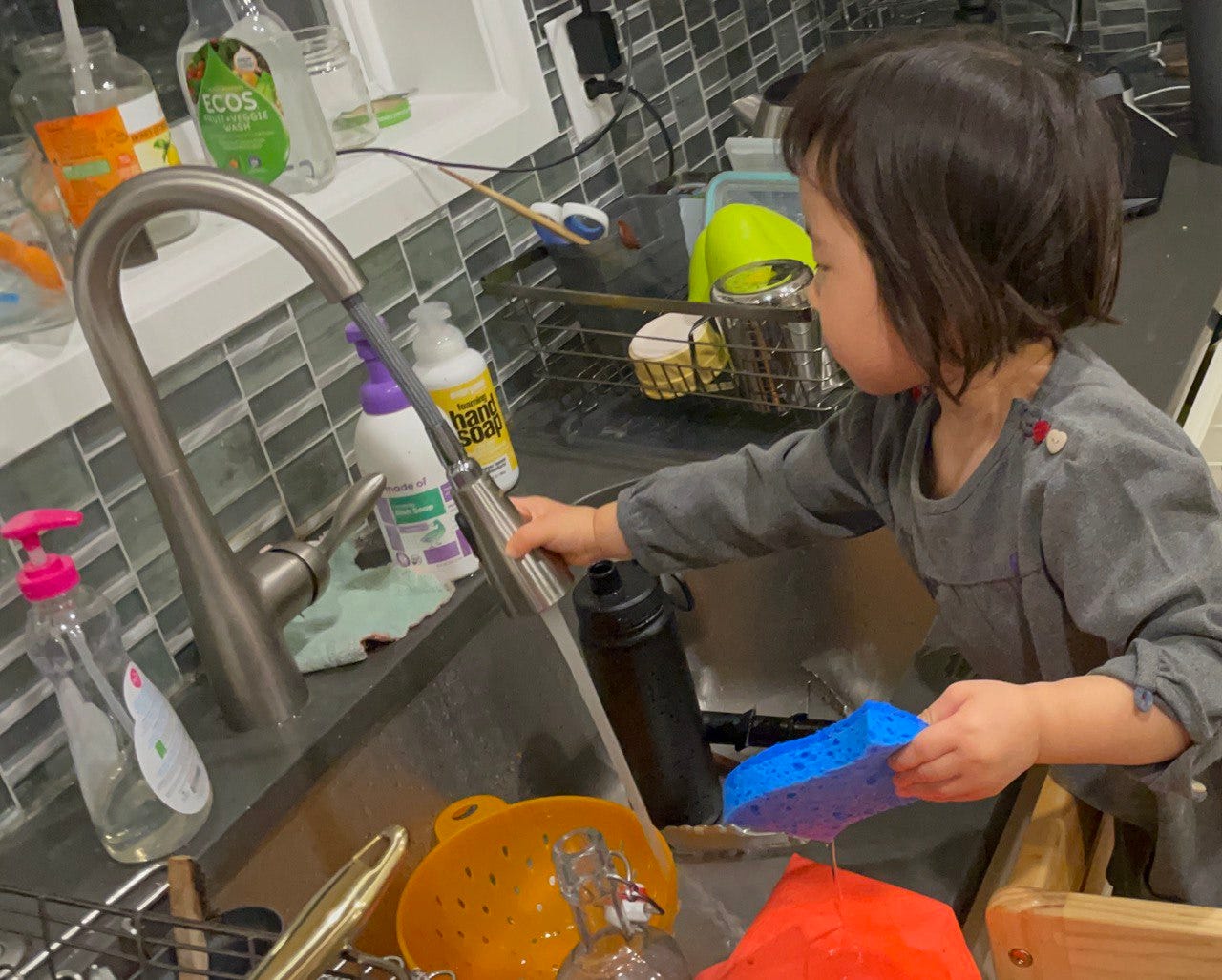Getting to Know Your Child Better - Part II: 30 Questions for Deeper Connection
This is for parents who want to know their children better. Using a structured framework can provide deeper insights instead of assuming you know your child just because you are their caregiver.
If you've ever been surprised by what your child's teacher or other parents tell you about your child, it may be because they observe your child from a different perspective.
Of course, just as our behavior can differ between home and work or school, children can also show different sides of themselves in various environments. However, sometimes we miss these nuances because we haven't thought deeply enough about them.
The Getting to Know Your Child Better series offers a framework that will guide you in gaining a deeper understanding of your child's personality and needs.
In my last post, I discussed the first three questions, exploring how your child responds to conflict, what activities captivate them, and how they react to new situations and people. Each question is designed to reveal different facets of your child's personality, helping you nurture their strengths and support them in areas where they might need more guidance. In this post, we’ll delve into the next set of questions, focusing on your child's self-expression, affection, fears, and problem-solving skills.
4. What is your child’s favorite way to express themselves?
Understanding your child’s preferred modes of expression is essential for nurturing their creativity and emotional well-being. Children communicate their thoughts, feelings, and identities in various ways, whether through art, music, storytelling, or movement. It’s important to recognize and support these preferences while also encouraging them to explore different forms of self-expression.
For instance, if your child loves to draw, painting and sketching might be their way of sharing emotions or stories they cannot yet articulate verbally. Encourage this self-expression by providing art supplies and creating a space where they can explore their creativity freely. Participating in art shows or displaying their artwork at home can boost their confidence and validate their feelings.
If your child expresses themselves through music, consider offering them lessons in an instrument they are interested in or simply playing music at home and encouraging them to sing or dance along. Music can be a powerful outlet for emotions and can help children connect with others who share similar interests.
For children who love storytelling, encourage them to create stories or write in a journal. This can be a way for them to process their experiences and explore their imagination. Listening to audiobooks or reading together can also inspire their creativity and enhance their storytelling skills.
While it’s essential to support your child’s preferred form of self-expression, it doesn’t mean they should only focus on that area. Children often enjoy expressing themselves in multiple ways. Remember, this post is about understanding your child better—by exploring different modes of expression, you can gain deeper insight into their personality.
For example, my daughter isn't particularly interested in art but enjoys expressing herself through music, storytelling, and dance. I encourage her to explore these interests while also gently introducing her to art by providing opportunities for creative activities. Recently, she has become fascinated with crafting while incorporating storytelling, combining her love for creativity with her interest in narratives.
Recognizing and supporting your child’s favorite form of self-expression not only fosters their creativity but also strengthens your bond as you engage in activities they love. By actively participating in or supporting these activities, you send the message that their thoughts and feelings are valued while encouraging them to explore new avenues of expression.
My daughter has recently developed a love for crafting and is always busy creating something new. She chats away endlessly while making her creations.
5. How does your child show affection?
Every child expresses affection differently, and understanding their unique way of showing love can deepen your relationship and help them feel secure and understood.
Some children are naturally affectionate and express love through hugs, kisses, or cuddles. If this is your child’s way, reciprocating these gestures can reinforce their sense of security and belonging. Physical affection can also be a way for them to communicate comfort and reassurance.
Others might show affection through acts of service, like helping you with chores or creating gifts. Acknowledge these gestures by expressing gratitude and praising their thoughtfulness. This recognition can encourage them to continue expressing love in ways that resonate with them.
Verbal expressions of love, such as saying “I love you” or offering compliments, are also common. Responding with similar affirmations can help your child feel appreciated and cherished. Additionally, teaching them to express gratitude and kindness toward others can cultivate empathy and strengthen their social connections.
It’s also important to understand which forms of affection your child might feel uncomfortable with. Some children may feel uneasy with physical touch, while others might find saying “I love you” awkward. As parents, we naturally want our children to become comfortable both giving and receiving various expressions of love. However, it’s crucial to recognize and respect their discomfort based on their age and personality. While modeling affectionate behavior in your interactions with your partner and other family members can help them become more accustomed to these expressions, it’s equally important to respect their boundaries and express love in ways that make them feel comfortable.
Gary Chapman's book, The 5 Love Languages, published in 1992, offers valuable insights not only for partners but also for all relationships, including those with children. Understanding and applying these concepts can help you express affection in ways that resonate with your child.
By observing and appreciating your child’s expressions of affection, and recognizing any discomfort they may have, you foster a positive emotional environment where love is openly shared and celebrated. This approach ensures that your child feels valued and understood in a way that suits their unique personality.
My daughter at 2.5 years old. She has been eagerly helping with the dishes since she was two. Of course, whenever she helped, the floor and the area around the sink would turn into a bit of a water park, adding to my workload. But the fact that she wanted to join in and help mom and dad was so heartwarming and sweet that I always made sure to thank her and tell her how much I enjoyed doing chores together. Perhaps because of that, my now five-year-old daughter loves to help out around the house. She considers matching socks and folding towels her jobs, often wipes down the table, helps with the dishes, and even pre-washes her dirty clothes before putting them in the washing machine.
6. What are your child’s fears or anxieties, and how do they cope with them?
Understanding your child’s fears and anxieties is crucial for helping them develop healthy coping mechanisms and emotional resilience. Children can experience a range of fears, from fear of the dark and loud noises to social anxieties and fear of failure.
When your child expresses fear, it's important to validate their feelings and provide reassurance. For instance, if they fear the dark, creating a comforting bedtime routine that includes a nightlight or a special object can help ease their anxiety. Reading stories that address fears and demonstrate courage can also be empowering, showing them that bravery is a process and not a fixed state.
For social anxieties, such as fear of speaking in public or meeting new people, gradual exposure to social settings and role-playing scenarios can build their confidence. Encourage them to express their feelings and remind them that it’s normal to feel anxious but important to take small steps toward overcoming it.
If your child is afraid of failure, emphasize the importance of effort and learning from mistakes. Share stories of famous people who overcame failures and highlight the value of perseverance. Encourage a growth mindset by helping them see challenges as opportunities for growth rather than threats to their self-worth.
Furthermore, share your own stories of failure, even if they didn't result in success. While success stories are inspiring, it's equally important to convey that failure is a part of life and that life continues beyond those moments. Let them know that life includes both successes and failures, and that living through these experiences is part of the journey. This perspective can help them understand that there’s no need to fear failure.
Additionally, teaching relaxation techniques, such as deep breathing or mindfulness, can provide your child with tools to manage anxiety. Practicing these techniques together can be a bonding experience and demonstrate your support, showing them that you’re there to help them navigate their fears.
By providing your child with understanding and support, you help them build the resilience needed to face their fears and anxieties with confidence.
7. How does your child solve problems or puzzles?
Observing how your child approaches problem-solving can reveal their cognitive strengths and areas for development. Children have unique ways of tackling challenges, whether through logical reasoning, creative thinking, or trial and error.
Some children excel in logical reasoning and enjoy puzzles or strategy games. Encouraging activities like chess, math games, or building projects can enhance their analytical skills and provide a sense of accomplishment.
Creative thinkers might prefer open-ended challenges that allow them to explore multiple solutions. Encourage them to think outside the box by presenting them with creative tasks, such as designing a new toy or writing a story. Providing materials for hands-on exploration, like building blocks or art supplies, can foster their innovative thinking.
For children who learn through trial and error, providing opportunities for experimentation and allowing them to make mistakes is key. Encourage them to try different approaches and praise their persistence and willingness to learn from setbacks.
By understanding and supporting your child’s problem-solving approach, you can help them build confidence and develop strategies that work for them. This knowledge also allows you to tailor learning experiences that align with their natural inclinations, making challenges both engaging and rewarding.
In this exploration of questions 4-7, we’ve delved into your child’s self-expression, affection, fears, and problem-solving abilities. Understanding these aspects of their personality can enhance your parenting approach and strengthen your connection with your child.
In the next post, we’ll cover these topics:
8. In what situations does your child show independence?
9. What topics or subjects does your child show a keen interest in?
10. How does your child react when they are frustrated or cannot get what they want?
11. What makes your child laugh or feel happy?
Thank you for joining me on this journey of discovery.
I hope this series helps you gain a deeper understanding of your child’s unique qualities and fosters a more meaningful relationship.



